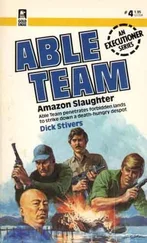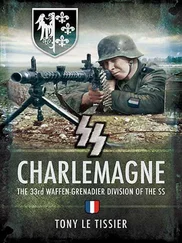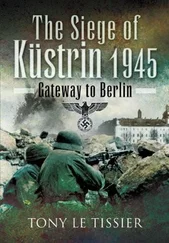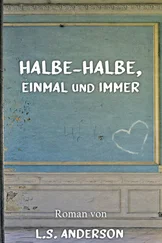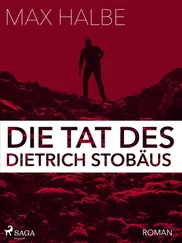Mihan, Werner: correspondence with the author.
Mückler, Jörg: article in Deutsches Soldatenjahrbuch 2000-2001 .
Novikov, A.A: ‘The Air Forces in the Berlin Operation’, Voyenno-Istoricheskiy
Zhurnal , May 1975.
Ortschronik von Kummersdorf Gut, copy of a handwritten document provided by Herr Rolf Kaim.
Refior Berlin Diaries, Federal Military Archives, Freiburg.
Timmons, Lt Col: ‘Command and Control in the Wehrmacht’, Parameters , US Army War College.
Voyenno-Istoricheskiy Zhurnal , April 1965.
Wenck, Gen. Walther: ‘Berlin war nicht mehr zu retten’: Stern Magazine , 16/95.
Weber, Helmut: ‘Eine alter “Greifer” kämpfte an der Oder’, Greif-Rundbrief , 1990.
Weidling, Helmuth: ‘Der Todeskampf der faschistischen Clique in Berlin aus der Erinnerung des General Weidling’, Wehrwissenschaftliche Rundschau , 1962.
Wilke, Horst: Am Rande der Strassen , Förderkreis Gendenkstätte Halbe e.V., undated.
Wilke, Horst: personal archives to which the author had access.

First published in 2005 by Sutton Publishing Limited
The History Press
The Mill, Brimscombe Port
Stroud, Gloucestershire, GL5 2QG
www.thehistorypress.co.uk
This ebook edition first published in 2013
All rights reserved
© Tony Le Tissier, 2005, 2013
The right of Tony Le Tissier to be identified as the Author of this work has been asserted in accordance with the Copyrights, Designs and Patents Act 1988.
This ebook is copyright material and must not be copied, reproduced, transferred, distributed, leased, licensed or publicly performed or used in any way except as specifically permitted in writing by the publishers, as allowed under the terms and conditions under which it was purchased or as strictly permitted by applicable copyright law. Any unauthorised distribution or use of this text may be a direct infringement of the author’s and publisher’s rights, and those responsible may be liable in law accordingly.
EPUB ISBN 978 0 7524 9534 7
Original typesetting by The History Press
Soviet Military History Journal , Moscow, April 1965.
Chaney, Zhukov , p. 307, quoting Nicolaevsky.
Eisenhower, Crusade in Europe , pp. 397–403; Montgomery-Hyde, Stalin , p. 525; Ziemke, Battle for Berlin , p. 64; Seaton, The Russo-German War , pp. 562–5.
Gosztony, Der Kampf um Berlin , p. 122 [quoting John Ehrmann, Grand Strategy, October 1944–August 1945 , p. 142].
Shtemenko, The Soviet General Staff at War , pp. 317–18.
Ibid ., pp. 319–20.
Koniev, Year of Victory, p. 83 .
Shtemenko, The Soviet General Staff at War, pp. 320–1.
Zhukov, Reminiscences and Reflections, pp. 346–51; The Great Patriotic War of the Soviet Union [hereafter cited as GPW], pp. 376–8; Erickson, The Road to Berlin, pp. 531–5.
GPW, pp. 88–9; Erickson, The Road to Berlin, pp. 535–7. The role of the tank armies after the breakthrough is taken from a map used by General Ivanov in the 1993 film Der Todeskampf der Reichshauptstadt [Chronos-Film].
Koniev, Year of Victory, p. 82.
Ibid., pp. 88–9.
Rocolle, Götterdämmmerung – La Prise de Berlin, p. 14; Guderian, Panzer Leader, pp. 323–5.
Toland, The Last Hundred Days, pp. 1118–19. These bunkers later accommodated the Soviet Army High Command in East Germany.
O’Donnell, The Berlin Bunker, pp. 40–3.
Tessin, Verbände und Truppen der deutschen Wehrmacht und Waffen-SS, with additional information on the Volksarmee from Tully. Note that the Germans used Roman numerals for their corps formation titles (including the unusual XXXX for 40) but not for their artillery corps. The Soviets did not use Roman numerals at all.
Wilke, Am Rande der Strassen, states that on 15 March 1945 an instruction was issued dropping the word ‘Panzer’ from XI SS Panzer Corps’ title and the word ‘Mountain’ from V SS Mountain Corps’ title, but it appears that this was not implemented, as the formations concerned are referred to by their full titles in contemporary documents, as used in this text.
Timmons, ‘Command and Control in the Wehrmacht’.
Zhukov, Reminiscences and Reflections , pp. 366–7.
Ziemke, Battle for Berlin , p. 83.
Koniev, Year of Victory , p. 105.
Ibid ., pp. 197–8.
Busse, ‘Die letzte Schlacht der 9. Armee’, p. 165.
Chuikov, The End of the Third Reich , p. 164.
Busse, ‘Die letzte Schlacht der 9. Armee’, p. 165.
Koniev, Year of Victory , pp. 111–12.
V. A. Roldugin, quoted in the Kreisleitung Jüterbog booklet, p. 50.
Von Luck, Gefangener meiner Zeit , p. 272, Tieke, Das Ende zwischen Oder und Elbe , pp. 144, 171; Gosztony, Der Kampf um Berlin , p. 207 [citing Steiner, Die Freiwilligen , p. 228].
Gosztony, Der Kampf um Berlin , pp. 228–9, including quotation from Der grundlegende Befehl des Führers vom 21. April 1945 (National Archives, Washington DC).
Kuby, The Russians and Berlin 1945 , p. 105 (quoting Colonel Refior, an officer of the Berlin Defence Area staff); Tieke, Das Ende zwischen Oder und Elbe , p. 214.
Six months’ service with the Reichsarbeitsdienst was a statutory preliminary to military service and included generous amounts of drill, marching and discipline in its programme. Towards the end of the war, RAD units were inevitably armed and incorporated into the military.
Novikov, ‘The Air Forces in the Berlin Operation’, p. 93. ‘We did not know that the enemy had so few troops to defend this boundary and expected strong opposition.’
Kortenhaus, Der Einsatz der 21. Panzer-Division , p. 131.
Zhukov, Reminiscences and Reflections , p. 609 – but not mentioned in Koniev!
Koniev, Year of Victory , p. 115.
Some 40 years later at Spandau Allied Prison the author discussed this episode with Soviet Army officers, who regarded this incident as common knowledge.
Tieke, Das Ende zwischen Oder und Elbe , p. 184, says that there was about a battalion of clerks and drivers from Zossen and three tank-hunting brigades mounted on bicycles, whom he presumes were Hitler Youth units.
Читать дальше


